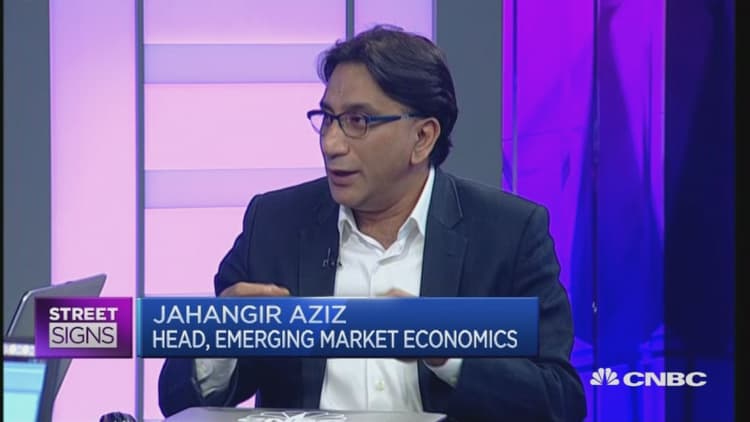
China's economy narrowly beat estimates Friday with a 6.7 percent expansion on-year in the three months through June, as a string of stimulus measures from the government and the central bank helped shore up demand.
Economists polled by Reuters had anticipated a growth rate of 6.6 percent.
The headline figure from the National Bureau of Statistics was steady from the previous quarter's 6.7 percent pace.
Second quarter Gross Domestic Product (GDP) was up 1.8 percent from the first quarter, Reuters reported.
The Chinese government is aiming for growth of 6.5 to 7 percent this year, a slower pace than what the world's second-largest economy had got accustomed to in the past two decades.
China's economy is gradually transitioning to a greater reliance on consumption compared with a previous emphasis on manufacturing but the transformation hasn't been all smooth-sailing. For 2015, Beijing logged 6.9 percent growth, its slowest pace in 25 years.
The country's second quarter GDP figure was not unexpected, as China has been careful to prep markets for further signs of a gradual deceleration.
Chinese premier Li Keqiang said this week that the the Chinese economy was "basically stable," following comments on July 4, reported by state media agency Xinhua, that it was "not easy" to achieve Q1's 6.7 percent growth rate and that the economy would show "continued steady development."



While growth was a shade better than expected in the second quarter, Capital Economics analysts noted that activity was largely driven by government stimulus rather than the private sector.
Data showed first half fixed asset investment grew 9 percent from a year ago, but private sector fixed-asset investment grew just 2.8 percent in same period, down from 3.9 percent growth in the first five months, indicating headwinds from slowing exports and macroeconomic jitters.
"Surging stimulus-linked investment by state firms appears to have compensated for the private sector's unwillingness to invest," added Capital Economics.
IHS Global Insight's China economist Brian Jackson said the numbers will fuel doubts over the quality of Chinese data as well as the nature of economic growth in the country.
"The first misgiving reflects concerns that the government is squeezing as much growth as plausible from relatively opaque sectors via accounting techniques," he wrote in a note.
"The second misgiving reflects concern that if the data is wholly accurate, then it implies a deepening shift towards state-led growth in both the secondary and tertiary sector, which raises major doubts about the long term productivity and thus sustainability of current economic activity," Jackson added.
The economy seemed to be holding up well nonetheless, with growth evenly spread between various sectors, said head of emerging market economics at JP Morgan, Jahangir Aziz.
"We've also seen in the first two quarters of this year reasonable amount of restructuring that is taking place in industries with excess capacity such as cement, iron ore and coal," Aziz told CNBC's "Street Signs."
The central bank has lowered banks' reserve requirements as well as borrowing rates, while the government has also boosted spending to avert a sharper slump.
Figures released separately showed industrial production in June rose 6.2 percent from a year ago, while retail sales rose 10.6 percent.
Friday's release was the first since China tweaked its methodology of compiling data by adding research and development (R&D) spending into its calculations for GDP, earlier this month.
The move will help bring China's calculations for the value of its goods and services more in line with global standards set by the United Nations and other world organizations, amid widespread investor skepticism about the accuracy of the country's official data.
Reuters contributed to this article.

